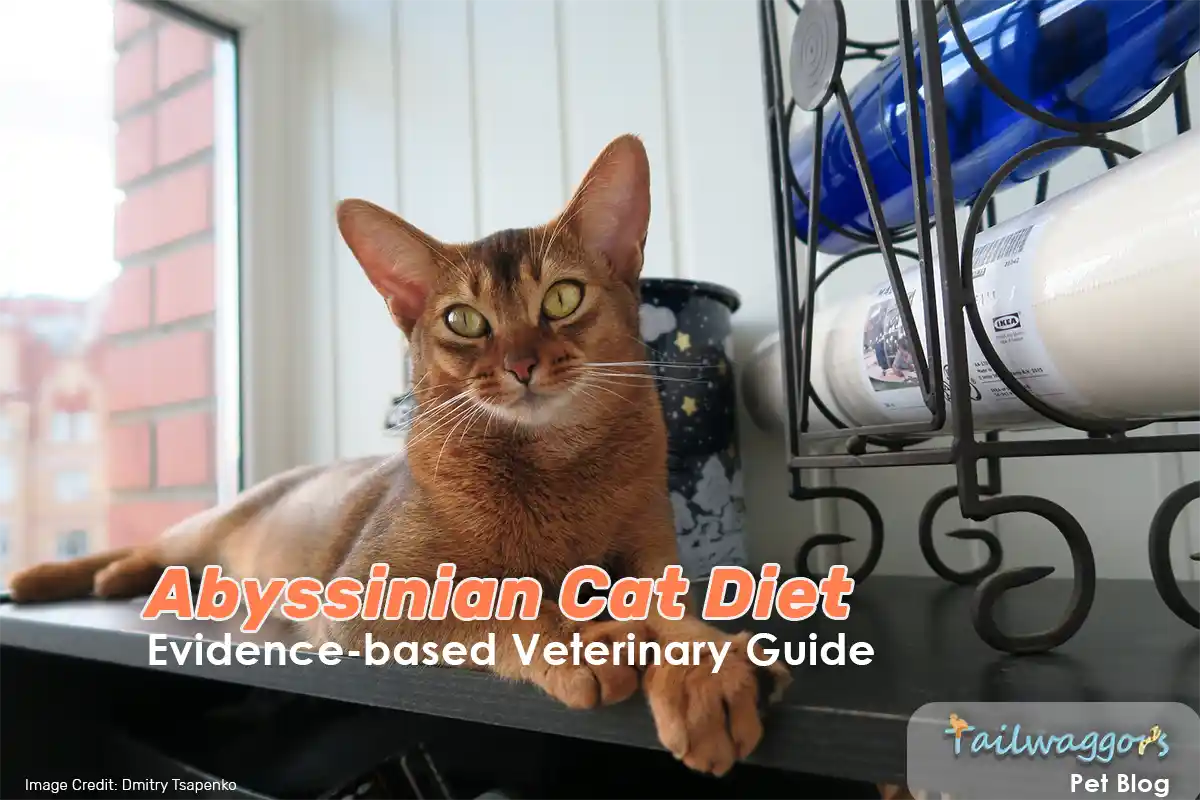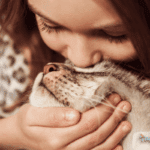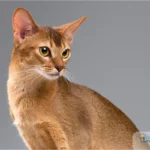Key Takeaway: Abyssinian cats thrive on a diet with high-quality protein (35-40% dry matter), balanced fats (15-20%), and proper hydration (60mL/kg body weight daily). Wet food and supplements like Omega-3s are critical for supporting joint health and kidney function, especially in senior cats. Consult a veterinarian to tailor feeding schedules and nutritional needs based on age, activity level, and medical history.
Did you know that the Abyssinian cat is often called the “athlete” of the feline world? With their boundless energy and sleek, muscular build, these cats require more than just basic kibble to thrive—they need a diet as dynamic and specialized as they are. But for many pet parents, the challenge lies in deciphering the endless sea of food options, managing potential allergies, and getting the right balance between wet and dry food.
In this evidence-based guide, we’ll demystify the nutritional needs of Abyssinian cats and provide practical, veterinarian-approved advice for every stage of their life. Whether you’re a first-time Aby owner or a seasoned enthusiast, you’ll discover tailored feeding schedules, top-rated food recommendations, and actionable tips to ensure your cat stays healthy, happy, and full of vitality.
CRITICAL MEDICAL ADVISORY: Diet changes can significantly impact your cat’s health, always consult your veterinarian before modifications, especially with:
- Medication regimens
- Existing medical conditions
- Kidney or urinary issues
- Dental disease
- Senior cats
- Recent surgery recovery
Why Diet Matters for Abyssinian Cats
Proper nutrition is more than just filling a bowl; it’s about meeting your Abyssinian’s unique dietary needs to support their active lifestyle. A well-balanced diet contributes to:
- Muscle Development: Abyssinians are highly energetic cats, requiring sufficient high-quality animal protein to maintain lean muscle mass.
- Immune System Health: Essential vitamins and minerals, such as Vitamin E and zinc, keep their immune system strong.
- Shiny Coats: High-quality fats, especially Omega-3 fatty acids, help maintain their sleek and shiny fur.
- Lifespan Enhancement: Balanced nutrition, combined with hydration and weight management, can add years to your Abyssinian’s life.
Explore how Abyssinians compare to other cat breeds in terms of dietary needs
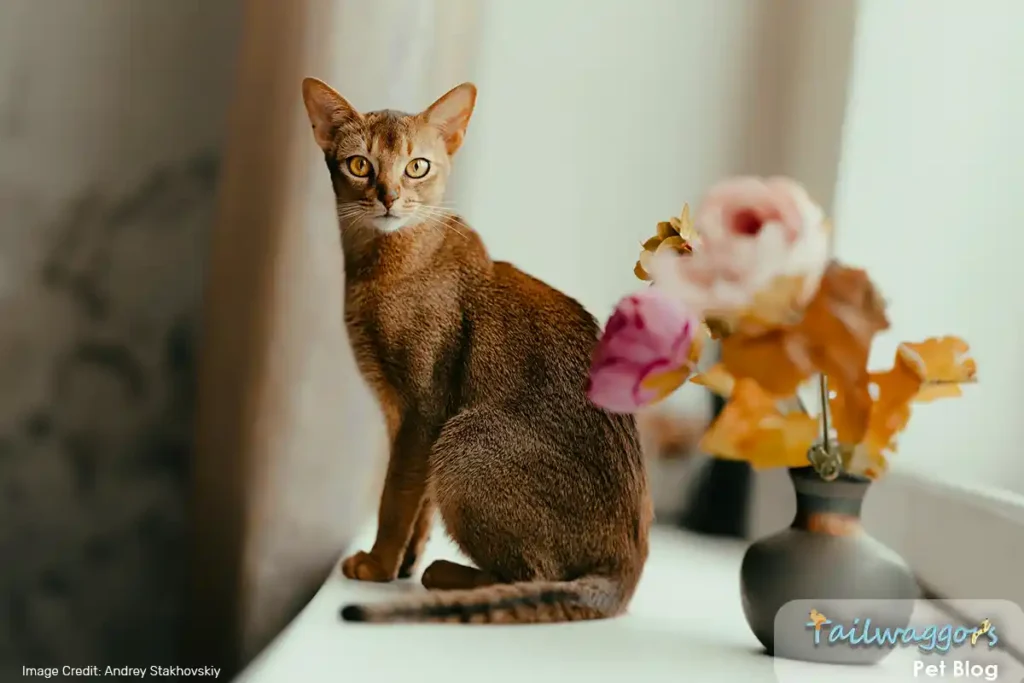
Nutritional Requirements for Abyssinian Cats
Protein
Abyssinians are obligate carnivores, meaning their bodies require protein to function. Aim for:
- Ideal Protein Content: 40%-50% of dry matter basis, with at least 26% (as-fed basis) in commercial food to meet AAFCO guidelines.
- Best Sources: Chicken, turkey, salmon, and lamb.
- Animal-derived proteins are superior to plant-based proteins due to better amino acid profiles and digestibility
Fats
Healthy fats provide energy and maintain a glossy coat.
- Ideal Fat Content: 15-20% of dry matter basis, ensuring adequate Omega-6 to Omega-3 ratio (between 5:1 and 10:1).
- Sources: Omega-3 fatty acids from fish oil (rich in DHA/EPA), chicken fat, and flaxseed oil.
- Omega-3s, particularly DHA, are essential for brain and vision health in Abyssinians.
Carbohydrates
While not essential, a small amount of carbohydrates can provide a limited energy source.
- Limit: No more than 5-10% of dry matter basis to avoid excess calorie intake.
- Sources: Low-glycemic options like sweet potatoes, peas, or barley.
- Avoid high-glycemic carbohydrates (e.g., corn, wheat) as they can lead to blood sugar spikes and potential weight gain
Vitamins and Minerals
- Taurine: Essential for heart and retinal health. Minimum: 0.1% (dry matter basis).
- Vitamin D: Supports bone health and calcium metabolism. Found in fish oils or fortified foods.
- Potassium and Magnesium: Critical for muscle function and preventing urinary tract issues.
Water Intake
Abyssinians need adequate hydration to prevent urinary tract issues.
- Wet Food vs. Dry Food: Wet food (75-80% moisture) is ideal for maintaining hydration, especially for cats prone to urinary issues.
- Mixing water into dry food or adding broths to encourage water intake.
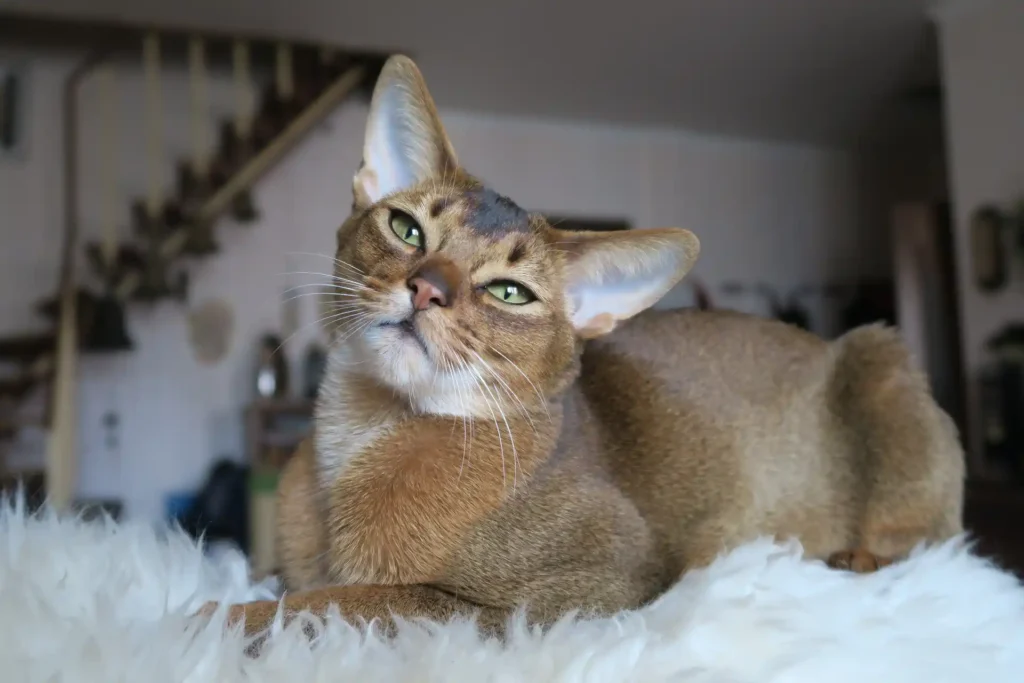
Abyssinian Cats: Best Food Choices in 2025
Abyssinian cats are known for their energetic nature and lean bodies, making their diet a key factor in maintaining their health. Below are the top commercial foods, homemade diet options, and recommended products tailored for Abyssinians.
Top Commercial Foods
When selecting commercial cat food, look for brands with AAFCO-approved labeling to ensure complete and balanced nutrition for all life stages. Here are the top recommendations:
| Brand | Type | Pros | Price Range |
|---|---|---|---|
| Royal Canin | Dry/Wet | Breed-specific formulas, balanced nutrition | $$ |
| Hill’s Science Diet | Dry/Wet | Supports digestive and skin health | $$ |
| Blue Buffalo | Dry/Wet | Grain-free, holistic ingredients | $$ |
| Purina Pro Plan | Wet | High protein, great for active cats | $$ |
| ORIJEN | Dry | High-protein, WholePrey ingredients, grain-free | $$$ |
| ACANA | Dry | Biologically appropriate, premium ingredients | $$ |
PRO TIP: Always prioritize foods rich in high-quality protein (minimum 35-40%), moderate fats (15-20%), and essential nutrients like taurine.
Homemade Diet Options
For cat owners who prefer making their Abyssinian’s meals at home, ensure the diet meets their nutritional needs:
- Protein Base: Cooked chicken, turkey, or fish (e.g., salmon or whitefish).
- Add-ons: Steamed sweet potatoes, spinach, or eggs to balance nutrients.
- Supplements: Add taurine powder to ensure your Abyssinian gets this critical amino acid.
Important Note: Always consult your veterinarian before starting a homemade diet to avoid nutrient deficiencies. These unbalanced diets can lead to more harm. Rather use tested and tried recipes from reputable Abyssinian Nutritionist Specialists.
Ensure food preparation areas are cat-safe with these tips.
Our Amazon Food Shopping List for Abyssinian Cats
Below are our top product recommendations to ensure your Abyssinian cat thrives:
 ORIJEN Six Fish Dry Cat Food, Grain Free Cat Food for All Life Stages, with WholePrey Ingredients, 4lb
ORIJEN Six Fish Dry Cat Food, Grain Free Cat Food for All Life Stages, with WholePrey Ingredients, 4lb ORIJEN Original Cat, Grain Free Dry Cat Food for All Life Stages, with WholePrey Ingredients, 4lb
ORIJEN Original Cat, Grain Free Dry Cat Food for All Life Stages, with WholePrey Ingredients, 4lb ORIJEN Six Fish Freeze Dried Cat Treats, Grain Free Treats for Cats, Raw Animal Ingredients, 1.25oz
ORIJEN Six Fish Freeze Dried Cat Treats, Grain Free Treats for Cats, Raw Animal Ingredients, 1.25oz ACANA Highest Protein Meadowlands Grain-Free Dry Cat Food, Free-Run Chicken and Turkey and Chicken Liver Cat Food Recipe, 4lb
ACANA Highest Protein Meadowlands Grain-Free Dry Cat Food, Free-Run Chicken and Turkey and Chicken Liver Cat Food Recipe, 4lb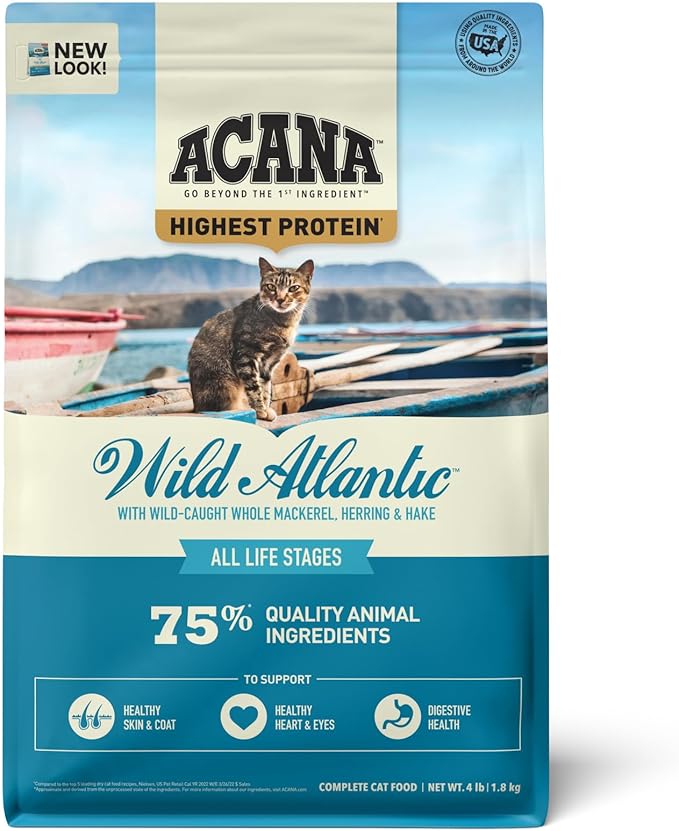 ACANA Highest Protein Dry Cat Food, Wild Atlantic, Grain Free Saltwater Fish With Freeze-Dried Liver Recipe, 4lb
ACANA Highest Protein Dry Cat Food, Wild Atlantic, Grain Free Saltwater Fish With Freeze-Dried Liver Recipe, 4lb ACANA Indoor Entree Dry Cat Food, Free Run Chicken and Turkey Recipe, 4 lb
ACANA Indoor Entree Dry Cat Food, Free Run Chicken and Turkey Recipe, 4 lb Royal Canin Adult Fit & Active Dry Adult Cat Food, 3 lb bag
Royal Canin Adult Fit & Active Dry Adult Cat Food, 3 lb bag Royal Canin Feline Health Nutrition Dry Indoor Cat Food, Supports Healthy Weight, Digestive Health and Hairball Management, 3 lb Bag
Royal Canin Feline Health Nutrition Dry Indoor Cat Food, Supports Healthy Weight, Digestive Health and Hairball Management, 3 lb Bag Royal Canin Appetite Control Spayed/Neutered 12+ Dry Adult Cat Food, 7 lb bag
Royal Canin Appetite Control Spayed/Neutered 12+ Dry Adult Cat Food, 7 lb bag PetSafe Drinkwell Platinum Cat Water Fountain (168 oz/5L) Pet Water Fountain for All Pet Sizes, Indoor Use, Encourages More Drinking, Includes Replaceable Carbon Filter, Grey
PetSafe Drinkwell Platinum Cat Water Fountain (168 oz/5L) Pet Water Fountain for All Pet Sizes, Indoor Use, Encourages More Drinking, Includes Replaceable Carbon Filter, GreyCommon Feeding Mistakes to Avoid
Overfeeding or Underfeeding
- Follow the calorie guidelines based on your cat’s weight and activity level.
- Example: A 10-pound Abyssinian typically needs 200-250 calories/day, adjusted for activity level.
Giving Toxic Foods
- Avoid artificial sweetners (like Xylitol), onions, garlic, caffeine, grapes, raw egg whites, and avocado.
- Keep chocolate and alcohol completely out of reach.
- Read more on poisoning, “Learn emergency tips for cat poisoning situations.”
- Read more on toxic plants, “Toxic Plants for Cats: A Comprehensive Reference Guide”
Ignoring Hydration
- Provide fresh water daily, preferably through a cat fountain.
Skipping Meal Consistency
- Switch from free feeding to scheduled meals. Feeding your cat at the same time daily to maintains their digestive health and prevents overeating and obesity.
Abyssinian cats, known for their active and athletic nature, require a carefully balanced diet to maintain their health. Overfeeding can lead to obesity, putting undue strain on joints and organs, while underfeeding may result in nutrient deficiencies and lethargy.
It’s crucial to follow calorie guidelines based on your cat’s weight and activity level. For example, a 10-pound Abyssinian typically needs around 200-250 calories daily, with adjustments for highly active or sedentary lifestyles. Measuring food portions accurately helps avoid guesswork, ensuring your cat receives the right amount to support optimal energy and
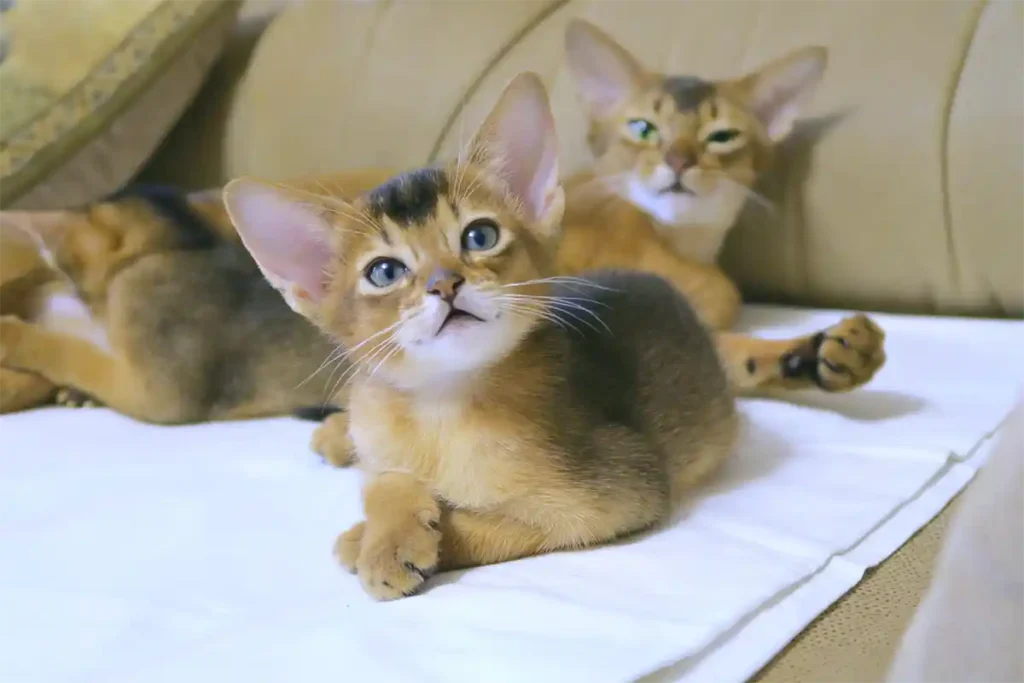
Age-Specific Feeding Guidelines
Kittens (0-12 months)
The first year of an Abyssinian kitten’s life is a critical period for growth and development. Their high energy levels and rapid growth demand a carefully planned diet to support their unique nutritional needs.
Kitten Weaning Feeding Schedule 4-6 weeks
Growth Milestones and Nutrition
- Weeks 3-4: Begin weaning with wet kitten food
- Months 2-3: Introduce small dry kibble portions
- Months 4-6: Peak growth period requires maximum protein
- Months 7-12: Gradual transition to adult portions
Abyssinian Kitten Meals, Calories needed
| Age (months) | Meals per Day | Calories / Pound | Special Considerations |
|---|---|---|---|
| 1-3 | 4-6 | 60-65 | Mother’s milk or formula supplementation |
| 3-6 | 3-4 | 50-55 | Begin wet food introduction |
| 6-12 | 3 | 45-50 | Transition to adult portion sizes |
Abyssinian Growth Monitoring Protocol
Essential Supplements for Hand-Reared Kittens:
- Vitamin E: 30 IU/kg body weight
- Taurine: 250mg/kg body weight daily
- DHA: 0.1-0.4% of diet
- Vitamin A: 9,000 IU/kg diet
Proper nutrition during the first year of an Abyssinian kitten’s life is essential for their growth, energy, and overall health. The infographics and charts simplify feeding schedules, calorie needs, and growth milestones, helping pet owners provide optimal care.
Start with frequent, small meals during weaning (4-6 weeks), gradually introducing wet and dry kitten food. Monitor weight gain and track milestones, ensuring kittens meet weekly growth targets.
By 6-12 months, transition to adult portions while maintaining high-quality, kitten-specific formulas rich in protein and essential nutrients. Pay attention to warning signs like poor appetite, weight gain issues, or lethargy, and consult a vet if concerns arise. Early nutrition builds a strong foundation for lifelong health and vitality.
Explore essential supplies for new cats and new cat owners with our
Vet-Approved New Cat Supply Checklist.
“Always choose kitten-specific formulas during the first year,” advises
Dr. Knoetze.
“These contain higher protein levels and essential nutrients for proper development.”
“Early nutrition sets the foundation for lifelong health.”
Abyssinian Growth Calculator
Growth Chart
| Age (weeks) | Weight (lbs) | Status | Expected Range |
|---|
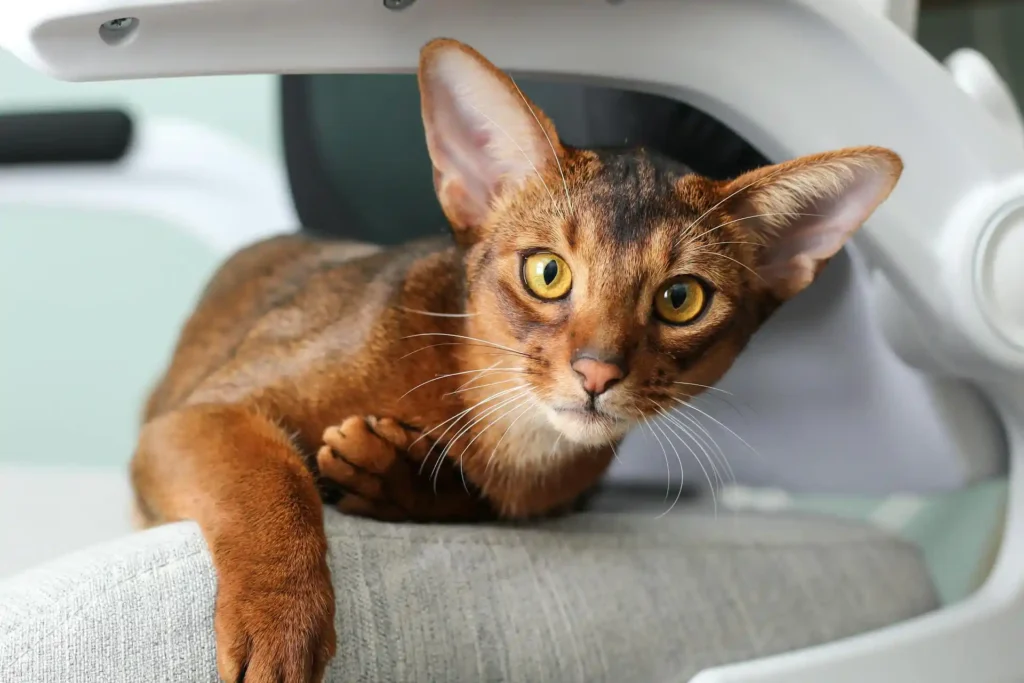
Adult Cats (1-7 years)
“Adult Abyssinians need a balance of nutrition and portion control,” says Dr. Mark Thompson, Veterinary Nutritionist. “Their active nature requires more calories than sedentary breeds, but obesity can still be a concern.”
Maintenance Diet Guidelines
Daily Nutritional Requirements:
- Protein: 40-50% (high-quality animal sources)
- Fat: 15-20%
- Moisture: 70-80%
- Calories: 25-30 calories per pound of ideal body weight
Nutritional Requirements (Dry Matter Basis):
- Protein: 35-40% (quality animal-sourced)
- Fat: 15-20%
- Moisture: 60mL per kg body weight
- Calories: 20-25 kcal/lb ideal body weight
Activity Level Adjustments:
| Activity Level | Calorie Modification | Example (10lb cat) |
|---|---|---|
| Sedentary Indoor | -10% | 225 calores/day |
| Moderately Active | Base Calculation | 250 calories/day |
| Highly Active | +10-20% | 275 calories/day |
Critical Health Markers
Adult Abyssinians thrive on a balanced diet tailored to their active nature while guarding against obesity. Their nutritional needs include 40-50% protein from high-quality animal sources, 15-20% fat, and 25-30 calories per pound of ideal body weight. Adjust intake based on activity levels—225 calories/day for sedentary cats, 250 calories/day for moderately active ones, and up to 275 calories/day for highly active cats.
Regularly monitor critical health markers, including a body condition score (4-5/9), hydration (skin tents under 1 second), and consistent stool and urination patterns. Use tools like a body condition score chart or hydration skin-pinch test for accuracy. If these markers fall outside normal ranges for over 24 hours, consult a veterinarian promptly. By aligning nutrition with activity and staying attentive to health cues, you can help your Abyssinian stay healthy and vibrant.
Quick Reference: Calorie
Daily Calorie Calculator
Recommended Daily Calories
Your Abyssinian needs approximately 0 calories per day.
Note: This is an estimate. Adjust based on your cat’s individual needs and veterinary advice.
Quick Reference: Hydration
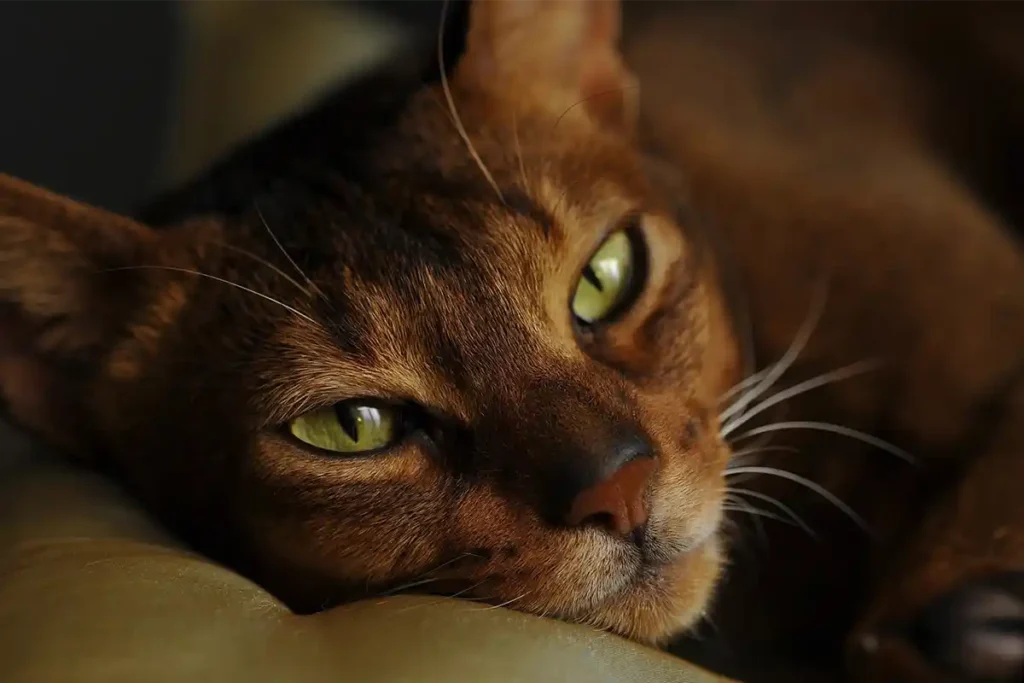
Senior Cats (7+ years)
"Aging Abyssinians often need dietary modifications to maintain health and prevent common age-related issues," notes Dr. Sarah Martinez, Feline Geriatric Specialist.
Senior Diet Modifications
Essential Changes:
- Increased protein (45-55%) to prevent muscle loss
- Enhanced omega-3 fatty acids for joint health
- Added antioxidants for immune support
- Adjusted phosphorus levels for kidney health
Common Health Concerns and Dietary Solutions:
- Joint Health
- Add glucosamine supplements
- Increase omega-3 fatty acids
- Consider collagen supplementation
- Kidney Function
- Moderate protein from high-quality sources
- Reduce phosphorus intake
- Increase moisture content
- Monitor sodium levels
Nutrient Requirements Guide
Aging Abyssinians benefit from tailored diets to support their changing health needs and prevent age-related issues. Senior cats require 45-55% protein to combat muscle loss, enhanced omega-3 fatty acids for joint health, and additional antioxidants for immune support. To protect kidney function, moderate protein intake, lower phosphorus levels, and ensure high moisture content.
Specific concerns like joint health can be addressed with glucosamine and collagen supplements, while kidney disease prevention focuses on reducing phosphorus to <0.6% and maintaining balanced sodium and potassium levels. Regular veterinary consultations are crucial for individualized dietary adjustments, ensuring your senior Abyssinian stays comfortable and healthy in their golden years.
Want to know more about Abyssinian Cat Health Issues: Common Problems & Prevention Tips
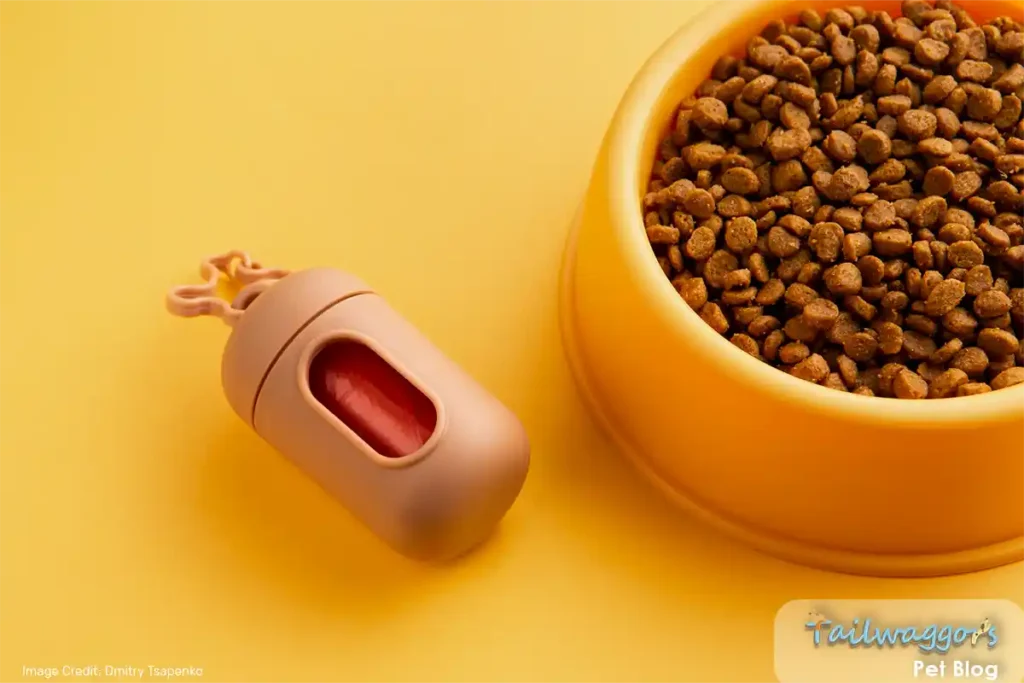
Measuring Tools Guide
Proper portioning is essential to maintaining your Abyssinian cat's health. These tools help you measure meals accurately, reducing the risk of overfeeding or underfeeding.
Digital Scale (Most Accurate)
- Why Use It? Provides precise measurements in grams or ounces, ideal for wet food or precise portioning.
- Tips for Use: Regularly calibrate for accuracy and measure directly on a flat surface.
- Best For: Monitoring exact amounts of wet food or specialized diets.
Measuring Cups (Convenient for Dry Food)
- Why Use It? Quick and easy to portion dry food with standard-sized cups.
- Tips for Use: Always level off portions to avoid over-measuring.
- Best For: Day-to-day portioning of dry kibble.
Food Scoop (Efficient and Easy)
- Why Use It? Designed with portion markers for consistency and ease.
- Tips for Use: Mark and use a consistent scoop size, and clean regularly to maintain hygiene.
- Best For: Fast meal prep when exact precision is less critical.
Pro Tip:
Combine tools for the best accuracy—use a digital scale for wet food and a measuring cup or scoop for dry food. Proper measuring prevents overeating and ensures your Abyssinian gets the right nutrients every meal.
Understanding the Feeding Charts
Portion Size Guide
Portion control and consistent scheduling are key to keeping your Abyssinian healthy and thriving. Use these feeding charts as a starting point and customize them based on your cat’s unique needs.
Portion Size Guide
Abyssinians have specific caloric needs depending on their weight and activity level. Use the chart below to guide portion sizes:
| Weight | Dry Food Equivalent | Calories |
|---|---|---|
| 8 lbs | ~1/3 cup | 180-200 |
| 10 lbs | ~1/2 cup | 220-250 |
| 12 lbs | ~2/3 cup | 260-290 |
Pro Tip: For active cats, add 10-20% more calories. For sedentary cats, reduce portions slightly to avoid overfeeding. Always weigh portions for accuracy and adjust regularly based on your cat’s body condition.
Daily Feeding Schedule
Routine is vital for Abyssinians, as it helps regulate metabolism and prevents overeating:
- Feed twice or three times daily at consistent times (e.g., 7 AM and 6 PM or add a midday meal for active cats).
- Avoid free-feeding, as it can lead to unhealthy weight gain.
- Gradually transition from free-feeding to scheduled meals by reducing access to food between set times.
Quick Tip:
Monitor your cat’s body condition score monthly. If your Abyssinian seems underweight or overweight, consult your veterinarian for guidance on adjusting calorie intake or portion sizes.

Optimal Feeding Times
Maintaining a consistent feeding routine helps your Abyssinian stay energized and healthy throughout the day. Here’s a flexible approach to dividing meals that fits both your cat’s needs and your schedule:
Morning Meal (7 AM) – 35% of Daily Intake
- Purpose: Kick-starts the day with a protein-packed meal, fueling energy for morning activities.
- What to Serve: Combine wet food for hydration with a small portion of dry kibble for texture and satisfaction.
- Flexibility Tip: If mornings are hectic, prepare portions the night before or use an automated feeder.
Afternoon Meal (3 PM) – 30% of Daily Intake
- Purpose: A lighter meal keeps energy levels stable without overwhelming digestion.
- What to Serve: A small, nutrient-dense portion of wet or dry food, depending on your cat’s preference.
- Flexibility Tip: Adjust the timing if you're unavailable mid-afternoon; slightly earlier or later works as long as the routine is consistent.
Evening Meal (7 PM) – 35% of Daily Intake
- Purpose: Balances protein and fat to support overnight metabolism and prevent nighttime hunger.
- What to Serve: Focus on wet food or a mix with dry kibble. Add supplements like omega-3s or joint-support nutrients if needed.
- Flexibility Tip: If your cat tends to feel hungry at night, slightly increase the portion size while monitoring total daily intake.
Pro Tip:
For busy schedules, automated feeders can help maintain routine meal times. Regularly adjust portions based on your cat’s body condition and activity level to keep them healthy and happy.
Feeding Schedule at a Glance:
| Time | Portion | Key Focus |
|---|---|---|
| 7 AM | 35% daily intake | High protein for morning energy |
| 3 PM | 30% daily intake | Light meal to sustain activity |
| 7 PM | 35% daily intake | Balanced for overnight metabolism |
Food Type Distribution
Food Type Distribution: Achieving the Ideal Balance for Your Abyssinian
Combining wet and dry food in a 70% wet and 30% dry ratio ensures your Abyssinian gets the hydration and nutrition they need while benefiting from the convenience and dental health advantages of dry food.
| Weight | Wet Food | Dry Food |
|---|---|---|
| 8 lbs | 5-6 oz (70% of diet) | 1/4 cup (30% of diet) |
| 10 lbs | 6-7 oz (70% of diet) | 1/3 cup (30% of diet) |
| 12 lbs | 7-8 oz (70% of diet) | 1/2 cup (30% of diet) |
Wet Food (70% of Diet)
Wet food forms the majority of your Abyssinian’s diet due to its numerous health benefits:
- Key Benefits:
- Hydration Support: Essential for urinary health, especially in cats prone to dehydration.
- High Protein Content: Supports lean muscle maintenance and overall energy needs.
- Weight Management: Low-calorie density helps maintain a healthy weight.
- Recommended Daily Amounts:
- 8 lbs: 5-6 oz
- 10 lbs: 6-7 oz
- 12 lbs: 7-8 oz
- Special Considerations: Cats with urinary or kidney issues may benefit even more from a higher percentage of wet food. Consult your veterinarian for specific advice.
Dry Food (30% of Diet)
Dry food complements wet food by offering unique advantages:
- Key Benefits:
- Dental Health: The crunchy texture helps reduce plaque and tartar build-up.
- Convenience: Easy to store and measure, ideal for busy households.
- Cost-Effective: A longer shelf life and lower cost per serving make it budget-friendly.
- Recommended Daily Amounts:
- 8 lbs: 1/4 cup
- 10 lbs: 1/3 cup
- 12 lbs: 1/2 cup
- Special Considerations: For cats with dental disease or difficulty chewing, use softer dry kibble or mix it with wet food.
Pro Tip:
If your Abyssinian prefers one type of food, gradually adjust the ratio over a few weeks to achieve the recommended balance. For example, mix a small amount of dry food into wet food to encourage a balanced diet. Always measure portions accurately using a digital scale or standard measuring cups to ensure proper calorie intake.
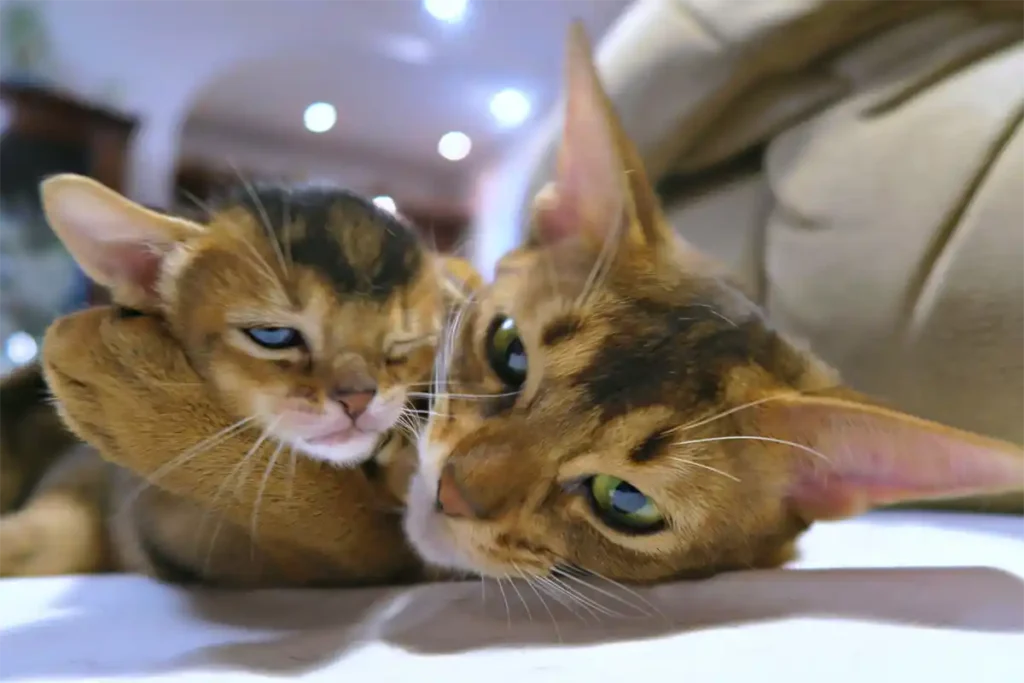
How to transition your Abyssinian Cat to a New Diet
Switching your cat to a new diet is a delicate process that requires a gradual approach to avoid digestive upset. Follow this flexible 7-day plan and adjust based on your cat's individual needs.
7-Day Transition Plan
| Day | Old Food | New Food |
|---|---|---|
| 1-2 | 75% | 25% |
| 3-4 | 50% | 50% |
| 5-6 | 25% | 75% |
| 7+ | 0% | 100% |
Note: If your cat shows signs of mild digestive upset (e.g., loose stools), extend each phase by 1-2 days to allow for adjustment.
Practical Tips for Success
- Monitor Closely: Watch for any signs of allergic reactions, changes in stool consistency, or decreased appetite throughout the process.
- Probiotics Can Help: Consider adding a cat-safe probiotic, such as Saccharomyces boulardii, to support digestion. Mix the recommended dosage with wet food for easy administration.
- Mix Thoroughly: Ensure old and new food are evenly combined to help your cat adjust to the new flavors and textures.
Signs of a Successful Transition
- Stool consistency remains normal.
- Appetite and energy levels are consistent.
- No signs of vomiting or diarrhea.
Warning Signs to Watch
Contact your veterinarian immediately if your cat exhibits:
- Persistent digestive issues like vomiting or diarrhea.
- A noticeable decrease in appetite.
- Lethargy or behavioral changes.
- Coat changes, such as dullness or excessive shedding.
Pro Tip:
For cats with sensitive stomachs or a history of food allergies, extend the transition period to 10-14 days and consult your veterinarian for personalized advice.

Customizing Your Abyssinian’s Diet for Their Unique Needs
Every Abyssinian cat has specific dietary requirements based on their activity level, age, and health. These guidelines will help you make tailored adjustments to keep your cat healthy and thriving.
Activity Level Modifications
Adjust calorie intake to match your cat’s activity level and energy needs:
| Activity Level | Calorie Adjustment | Tips |
|---|---|---|
| Less Active | Reduce by 10-15% | Focus on wet food to support hydration. |
| Average Activity | No change | Maintain standard daily portions. |
| Very Active | Increase by 10-15% | Add high-protein snacks like freeze-dried chicken or turkey. |
Age-Based Adjustments
Abyssinians’ dietary needs change throughout their lives. Adjust portions based on their life stage:
| Age Group | Calorie Adjustment | Key Considerations |
|---|---|---|
| Kittens | Increase by 20-30% | High-protein kitten-specific formulas support rapid growth. |
| Adults | Standard portions | Maintain a balance of protein, fat, and hydration. |
| Seniors | Reduce by 10-20% | Opt for senior formulas with added joint support and lower phosphorus. |
Special Considerations
- For Active Cats:
- Provide high-protein wet food with moderate fat content.
- Offer small, protein-packed snacks during the day for extra energy.
- For Senior Cats:
- Choose senior-specific diets enriched with glucosamine, chondroitin, and omega-3s for joint health.
- Monitor weight regularly to ensure they are neither losing nor gaining too much.
- For Pregnant or Nursing Cats:
- Increase daily portions by 25-50%.
- Add an extra meal to meet their heightened energy demands.
- For Cats on a Weight Management Program:
- Reduce overall portions by 10% and prioritize wet food to help manage calorie intake.
- Track weekly weight changes using a digital scale and adjust portions as needed.
- For Cats with Health Conditions:
- Consult your veterinarian to select appropriate prescription diets (e.g., low-phosphorus diets for kidney disease or hydrolyzed protein diets for allergies).
- Closely monitor food intake, stool consistency, and overall energy levels.
Pro Tip:
Reassess your cat’s body condition score (4-5/9 is ideal) and weight every month. Use this as a baseline to adjust portions or calorie intake as needed, and consult your veterinarian for specialized plans during illness or recovery.
Visual Summary: Adjusting Your Cat’s Diet
| Factor | Adjustment | Examples |
|---|---|---|
| Activity Level | ±10-15% calories | Add snacks for active cats; reduce portions for less active ones. |
| Age | Increase for kittens, reduce for seniors | Senior diets with joint support and reduced phosphorus. |
| Special Needs | Consult vet for customized diets | Pregnant cats need 25-50% more food. |
Discover if CBD oil is the right supplement for your Abyssinian.
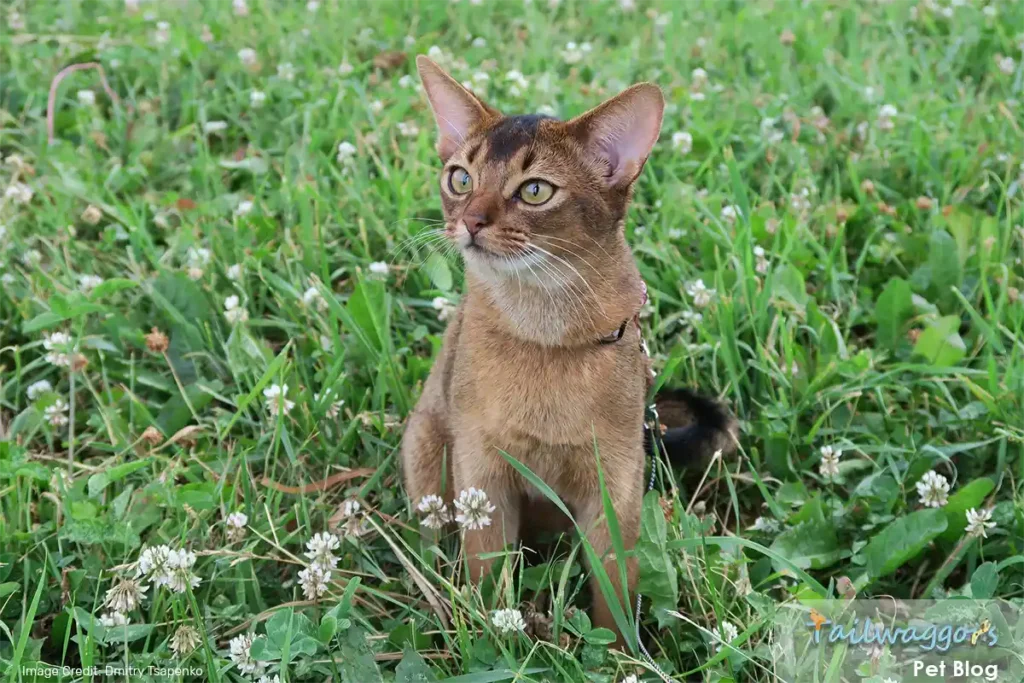
Seasonal Dietary Adjustments
Adjusting your Abyssinian’s diet based on seasonal changes can help keep them comfortable, hydrated, and healthy. Here’s how to modify their nutrition effectively during summer and winter months.
Summer Nutrition Tips
Hot weather can increase the risk of dehydration and reduce appetite. Focus on hydration and lighter, more frequent meals to keep your Abyssinian cool and healthy.
Key Adjustments:
- Increase Wet Food Ratio: Boost wet food by 10-15% to ensure your cat stays hydrated.
- Add Ice Cubes: Place ice cubes in water bowls to keep water cool and encourage drinking.
- Offer Frozen Treats: Make cat-safe frozen snacks, such as pureed wet food or unsalted chicken broth frozen in ice cube trays.
- Serve Smaller, Frequent Meals: Divide daily portions into 3-4 smaller meals to aid digestion and prevent overheating.
Safety Note: When offering frozen treats, ensure they are free of harmful ingredients like onions or garlic, which are toxic to cats.
Expert Advice: "During summer months, hydration is critical," says Dr. Thompson. "Adding water fountains and placing multiple water sources around your home can help your cat drink more."
Winter Dietary Modifications
Cold weather increases energy demands, particularly for active or outdoor cats. Adjust their diet to maintain energy levels and body warmth.
Key Adjustments:
- Increase Caloric Intake: Add 5-10% more calories to support their metabolism, especially if they spend time outdoors.
- Incorporate Warming Foods: Offer warm, low-sodium bone broth or lightly heated wet food as a treat.
- Maintain Feeding Schedules: Stick to consistent feeding times to provide routine and stability.
- Slightly Larger Portions: For very active cats, increase portions slightly, but monitor weight to avoid overfeeding.
Safety Note: If using bone broth, ensure it is homemade or store-bought without added salt, onions, garlic, or other harmful ingredients.
Expert Advice: "Indoor cats may need fewer winter adjustments, but hydration remains crucial," advises Dr. Knoetze. "Monitor water intake and encourage drinking by offering clean, fresh water daily."
Pro Tip:
Whether it’s summer or winter, regularly check your Abyssinian’s body condition score (ideal: 4-5/9) and weight to ensure dietary changes are effective without leading to overfeeding or underfeeding.
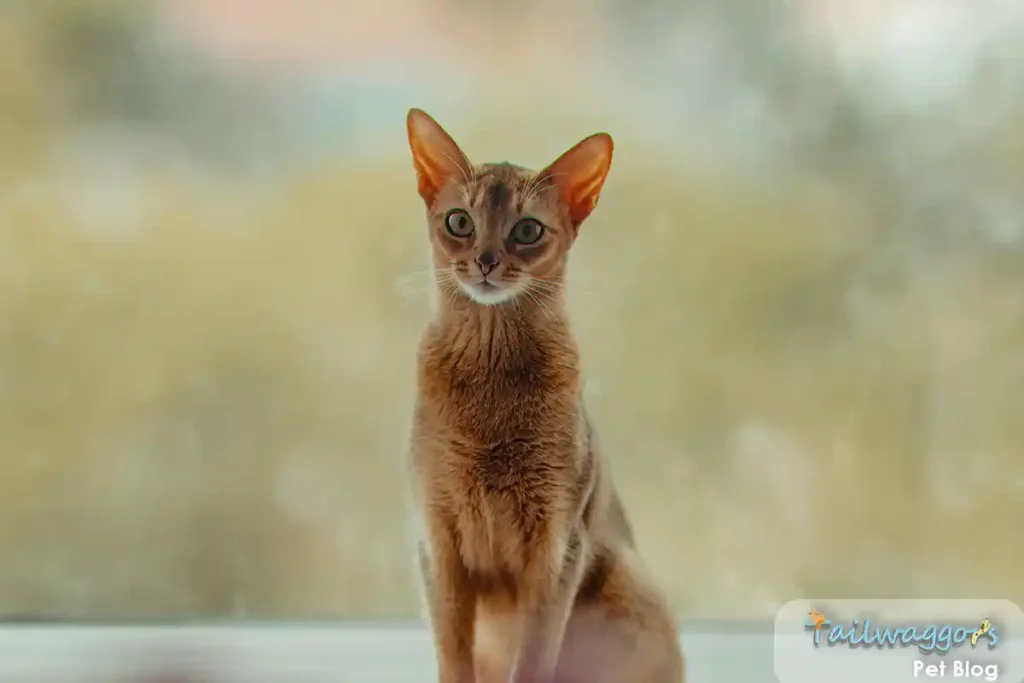
Medical Condition Management
Caring for Senior Abyssinian Cats
At Tailwaggors, we believe that the golden years of your Abyssinian cat should be as vibrant and joyful as their younger days. As they age, Abyssinians require specialized care to manage common health conditions and maintain their quality of life. This section provides actionable advice on tailoring their diet, understanding critical health assessments, and utilizing tools to monitor their well-being daily.
Why Senior Nutrition and Care Matter
Senior Abyssinians (7+ years) are more susceptible to conditions like kidney disease, diabetes, and joint issues. Proactive care, including regular veterinary check-ups and condition-specific diets, can significantly improve their health outcomes. By following evidence-based guidelines and tracking their daily habits, you’ll ensure your beloved feline stays healthy and happy.
Key Components of Senior Care
1. Tailored Diets for Medical Conditions
Your senior Abyssinian’s diet plays a critical role in managing chronic health issues:
- Kidney Disease: Reduce phosphorus intake (early CKD: <0.6%, advanced: <0.4%), maintain moisture levels (≥75%), and prioritize high-quality proteins.
- Diabetes: Feed at fixed 12-hour intervals aligned with insulin administration. Measure portions precisely and monitor glucose levels with your vet's guidance.
Important Tip: Regularly monitor your cat’s response to dietary adjustments and consult your vet for fine-tuning.
2. Veterinary Assessment Checklist
Routine vet visits are vital for detecting and managing age-related health issues. These essential tests and assessments should be part of your senior cat’s care plan:
- Laboratory Tests: Include Complete Blood Count, Comprehensive Metabolic Panel, Thyroid Function (T4), and SDMA kidney markers.
- Physical Assessments: Check for dental health, joint mobility, muscle condition, cognitive function, and hydration status.
Proactive Care Insight: Quarterly screenings help catch potential issues early, allowing for timely intervention.
3. Home Monitoring Tools
Daily tracking empowers you to stay on top of your Abyssinian’s health. Use our Daily Tracking Sheet to log:
- Morning weight, appetite, water intake, and medication timing.
- Evening food consumption, energy levels, and urination frequency.
Why It Matters: Consistent monitoring provides valuable insights into your cat’s health trends, which can guide your vet in fine-tuning care.
Medical Condition Calculator
Symptom Tracker
Recommended Diet Adjustments
Kidney Disease Protocol
Clinical Protocol:
Diabetes Management
Clinical Protocol:
Medication and Diet Interactions
Managing medication and diet interactions is vital for your cat's health. Coordinating the timing of meals and medications, along with careful monitoring, plays a key role in ensuring effective treatment.
Comprehensive Drug Interaction Guide
1. Common Medications
Timing and Food Requirements:
Antibiotics like amoxicillin should be given after food, while doxycycline requires food to prevent irritation but no calcium-rich items nearby. Thyroid medications like methimazole work best on an empty stomach, and heart medications such as atenolol benefit from consistency in timing. Always monitor for appetite changes, energy levels, or digestive upset, and consult your vet for tailored advice.
2. Supplement Interactions
Critical Timing Matrix:
| Medication Type | Food Timing | Supplement Spacing | Monitoring |
|---|---|---|---|
| Antibiotics | +2 hours | No calcium | GI health |
| Thyroid | Before food | No iodine | T4 levels |
| Heart | With food | Monitor K+ | BP checks |
| Pain | With food | Joint supplements OK | Kidney values |
Supplements can affect how medications work, so timing is crucial. Space calcium supplements at least two hours apart from antibiotics, and avoid iodine supplements with thyroid medications like methimazole. Potassium supplements with heart medications require careful monitoring to prevent imbalances, while joint supplements are safe with food but need regular kidney function checks.
Always track your cat’s health metrics, such as digestive health, T4 levels, blood pressure, and kidney values, to ensure optimal outcomes. Consult your vet if you’re unsure about combining supplements and medications.
Summary: Bringing It All Together
Managing your Abyssinian’s medication and diet interactions is a balancing act that requires careful planning and monitoring. Here’s how you can ensure optimal treatment outcomes:
- Understand Medication Needs: Each type of medication has specific timing and dietary requirements. Adhering to these ensures the best absorption and efficacy.
- Set a Routine: Establish a consistent schedule for feeding and administering medications. This is particularly important for heart and thyroid medications that rely on stability.
- Monitor Regularly: Use a health tracker to document appetite, weight, blood pressure, and medication effects. Regular updates to your veterinarian ensure that any adjustments are based on accurate data.
By coordinating meals with medication timing, you’re not only ensuring the effectiveness of treatments but also contributing to your cat’s overall well-being. With these steps, your Abyssinian can enjoy a healthier, more comfortable life.
Tailwaggors Tip: Keep a copy of your cat’s medication schedule and food timing in a visible place to stay consistent, and consult your vet for any concerns about interactions.
Laboratory Monitoring Guidelines
Age-Based Testing Schedule
Baseline Testing (All Ages)
Regular laboratory testing is essential for tracking your Abyssinian’s health, especially as they age. This infographic outlines a tailored testing schedule designed to catch health issues early when they’re easiest to manage. Baseline tests—like Complete Blood Count (CBC), Comprehensive Metabolic Panel, and SDMA Kidney Marker—offer invaluable insights into your cat’s overall well-being. For younger cats under 7, annual tests suffice. Cats aged 7–10 benefit from semi-annual monitoring, while those over 10 require quarterly evaluations to address age-related risks proactively. By staying consistent with these tests, you can ensure your Abyssinian lives a healthier, longer life with fewer medical surprises.
Result Interpretation Guide
Normal Ranges and Red Flags:
Lab Results Made Simple: Spotting What’s Normal and What’s Not
Lab results can feel overwhelming, but they’re a vital window into your Abyssinian’s health. This infographic simplifies the key markers for kidney, liver, and thyroid function, showing what’s normal and what may need attention.
For kidneys, look for creatinine levels between 0.8–2.4 mg/dL and SDMA under 14 μg/dL, while increases above these values signal possible kidney stress. Liver health markers like ALT (12–130 U/L) and ALP (14–111 U/L) should stay within range, with elevated bilirubin levels (>0.9 mg/dL) indicating a potential concern.
For thyroid function, T4 should remain between 0.8–4.7 μg/dL; higher values could signal hyperthyroidism. Remember, significant weight changes alongside abnormal lab results always warrant a discussion with your vet. Early detection can make all the difference!
Learn more about common Abyssinian health issues and how to be prepared for them.
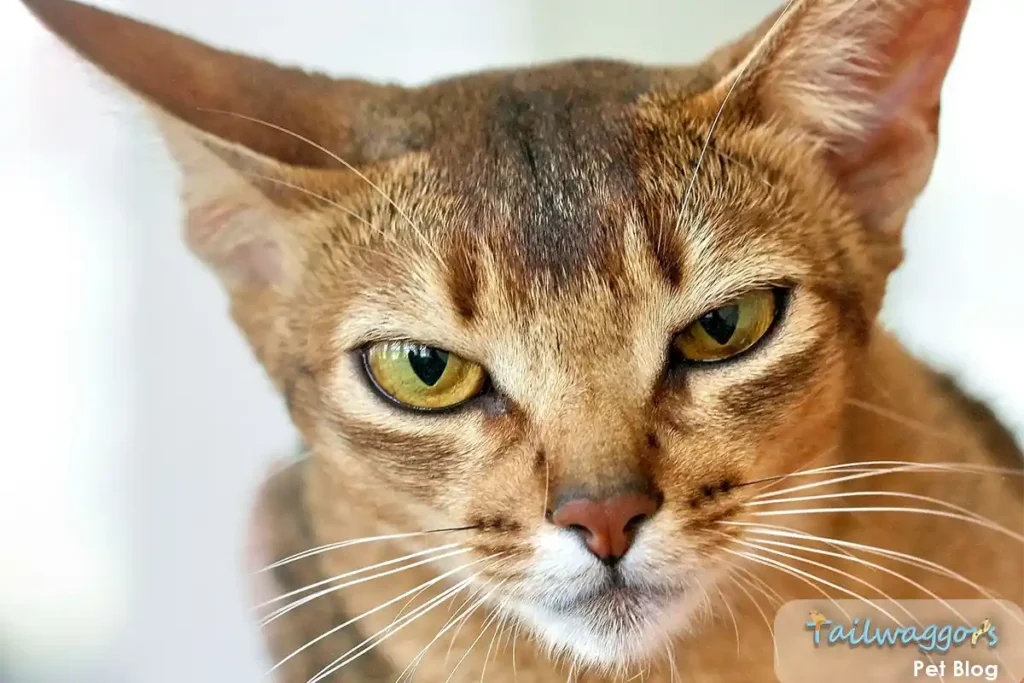
Preventive Care and Quality of Life Assessment
Quality of Life Monitoring Tool
Daily Assessment Matrix:
Your Abyssinian’s health and happiness deserve close attention, and this score card makes it simple to track both physical and mental well-being. By scoring factors like appetite, mobility, social interaction, and playfulness daily, you can identify subtle changes before they become serious concerns.
A total score of 45-50 means your cat is thriving, while scores under 25 highlight the need for a veterinary consultation. Remember, small fluctuations are normal, but consistent monitoring over time helps you detect patterns and ensure your cat enjoys the best quality of life possible. This tool empowers you to care for your Abyssinian with confidence and love.
Preventive Care Schedule
A Year-Round Guide
Caring for your Abyssinian means staying ahead of potential health issues with a proactive preventive care schedule. Monthly, check their weight, dental health, and behavior to catch early signs of discomfort, while keeping up with parasite prevention. Every three months, focus on in-depth assessments like blood pressure checks, body condition scoring, and nutrition reviews.
Annually, prioritize comprehensive bloodwork, urinalysis, and vaccination updates to ensure your cat’s long-term well-being. By following this timeline, you’re not just maintaining your Abyssinian’s health—you’re giving them the best chance to live a vibrant, happy life at every stage.
Prepare for vet visits and emergencies with confidence—explore our Veterinarian’s Complete Cat Emergency Guide for essential tips and checklists.
Implementation Resources
1. Daily Monitoring Chart
2. Emergency Information Card
Our Daily Monitoring Chart and Emergency Information Card are designed to make managing your Abyssinian’s health effortless and organized. Use the Daily Monitoring Chart to log key metrics like weight, appetite, water intake, and activity level each day, helping you detect changes early. Keep the Emergency Information Card on hand with your cat’s medical details and vet contacts for quick access in case of emergencies. These tools empower you to provide proactive, informed care for your feline companion.
Conclusion: Empowering You to Care for Your Abyssinian
Your Abyssinian isn’t just a cat—they’re a cherished companion whose boundless energy, curious nature, and unique charm light up your home. Their care deserves nothing less than your best effort, and with the knowledge from this guide, you’re equipped to give them exactly that.
From carefully balanced diets to routine monitoring and preventive care, the small steps you take today lay the foundation for a lifetime of health and happiness. By staying proactive, documenting changes, and collaborating with your veterinarian, you ensure your Abyssinian’s golden years are as vibrant as their youth.
At Tailwaggors, we believe that caring for an Abyssinian is a partnership—between you, your cat, and the community of resources and tools available to support you. Whether it’s fine-tuning their nutrition or preparing for unexpected health needs, we’re here to help you every step of the way.
So as you embark on this journey, remember: every meal you measure, every check-up you schedule, every playful moment you share—it’s all part of the incredible bond you have with your Abyssinian. Together, let’s make every day one of health, vitality, and endless love.
"Your Abyssinian deserves the best, and with your care, they’ll live the long, happy life they were meant to enjoy."
Take the next step in holistic care—explore our Abyssinian Cat Health Issues Guide for more tips and insights.
Take this Poll
🐾 Is Your Aby Getting the Best Care?
Heart, kidney, genetic, or dental concerns — what worries you most about your Abyssinian? 🐈
Share this guide with fellow cat parents to spread awareness and promote optimal health.


